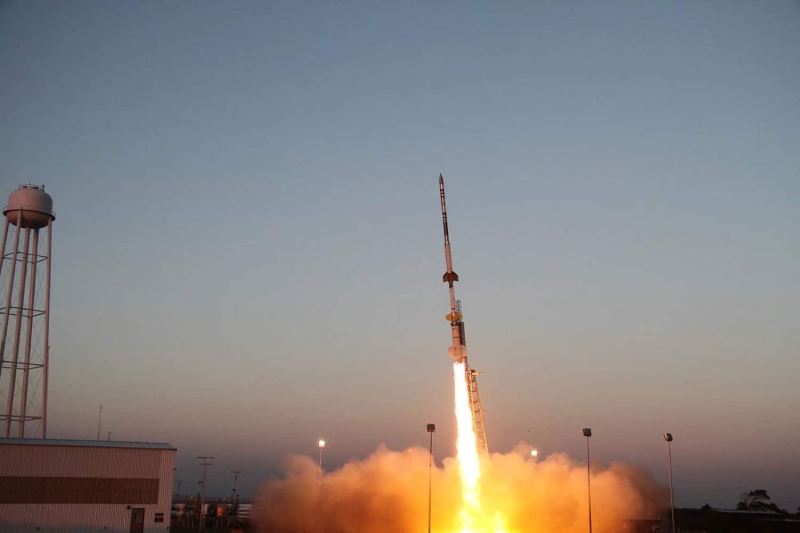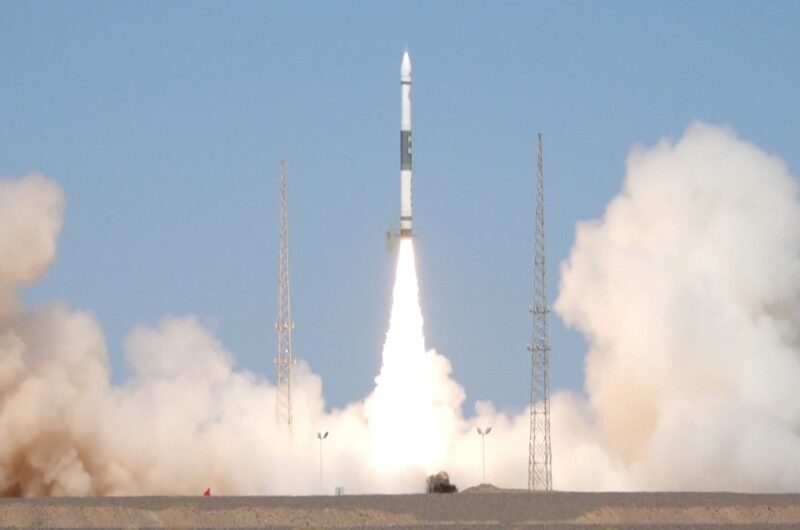On April 8, 2024, during the total solar eclipse, NASA will launch three sounding rockets to investigate the effects of a brief decrease in sunlight on Earth’s upper atmosphere.
NASA’s Wallops Flight Facility in Virginia will be the launch site for the Atmospheric Perturbations surrounding Eclipse Path (APEP) sounding rockets, which are designed to investigate the ionosphere’s disruptions caused by the Moon’s eclipse of the Sun. During the October 2023 annular solar eclipse, the sounding rockets were successfully retrieved after being launched from White Sands Test Facility in New Mexico. They will be relaunched in April 2024 after being renovated and outfitted with new equipment. Aroh Barjatya, an engineering physics professor at Embry-Riddle Aeronautical University in Florida and the director of the Space and Atmospheric Instrumentation Lab, is in charge of the project.
Three separate times will see the sounding rockets launch: 45 minutes prior to, 45 minutes during, and 45 minutes following the local eclipse’s peak. These time intervals are crucial for gathering information about how the ionosphere is disrupted by the Sun’s abrupt absence, potentially interfering with human communication.
The ionosphere is a region of Earth’s atmosphere that is between 55 to 310 miles (90 to 500 kilometers) above the ground. “It’s an electrified region that reflects and refracts radio signals, and also impacts satellite communications as the signals pass through,” said Barjatya. “Understanding the ionosphere and developing models to help us predict disturbances is crucial to making sure our increasingly communication-dependent world operates smoothly.”
The ionosphere creates the barrier separating the vacuum of space from Earth’s lower atmosphere, which is where humans live and breathe. It is composed of a vast ocean of particles that are electrically charged and ionized as a result of solar radiation, or the energy from the Sun. As night falls, previously ionized particles relax and recombine back into neutral particles, causing the ionosphere to thin out. The ionosphere is a dynamic region, and it is challenging to predict its exact characteristics at any one time due to the influence of Earth’s space weather and terrestrial weather on these particles.
Satellites may not be in the correct location or at the proper time to cross the eclipse path, making it challenging to monitor short-term changes in the ionosphere during an eclipse. NASA can launch targeted sounding rockets to explore the eclipse’s effects at the appropriate time and at all ionosphere altitudes because the exact date and time of the total solar eclipse are known.
Rapid, localized sunsets caused by the eclipse shadow racing through the atmosphere cause both large-scale atmospheric waves and small-scale disturbances, or perturbations. Several radio communication frequencies are impacted by these disturbances. Scientists may test and enhance existing models that assist predict potential disruptions to our communications, particularly high frequency transmission, by collecting data on these perturbations.
The highest altitude that the APEP rockets are predicted to reach is 260 miles (420 kilometers). The charged and neutral particle densities as well as the ambient magnetic and electric fields will be measured by each rocket. “Each rocket will launch three, but eject four secondary instruments, each the size of a two-liter soda bottle, that measure the same data points, so it’s comparable to the results of fifteen rockets,” said Barjatya. Embry-Riddle built three of the secondary instrumentation on each rocket, while Dartmouth College in New Hampshire built the fourth.
Apart from the rockets, many teams from across the United States will be measuring the ionosphere using different techniques. A group of Embry-Riddle students will launch several high-altitude balloons. A range of ground-based radars will be operated by co-investigators from the Air Force Research Laboratory in New Mexico and the Massachusetts Institute of Technology’s Haystack Observatory in Massachusetts to collect observations. Scientists from Embry-Riddle and the Johns Hopkins University Applied Physics Laboratory are using this data to improve on current models. When taken as a whole, these diverse studies will contribute to the puzzle pieces that are required to view ionospheric dynamics in its whole.
Scientists observed a dramatic drop in the density of charged particles as the annular eclipse shadow moved throughout the atmosphere during the 2023 annular solar eclipse, when the APEP sounding rockets were launched. “In the second and third rockets, we observed disturbances that could have affected radio communications, but not in the first rocket, which occurred prior to the peak local eclipse,” stated Barjatya. “To see if the perturbations start at the same height and if their magnitude and scale remain the same, we are quite thrilled to relaunch them during the total eclipse.”
Since there won’t be another total solar eclipse over the contiguous United States until 2044, these studies provide scientists a unique chance to gather vital data.
The APEP launches will be included in NASA’s official broadcast of the total solar eclipse and live streamed on NASA’s Wallops official YouTube channel. From 1-4 p.m., the public can witness the launches firsthand at the NASA Wallops Flight Facility Visitor Center.
Topics #NASA #solar eclipse #Sounding Rockets










